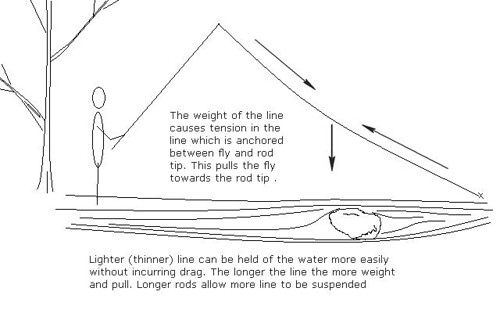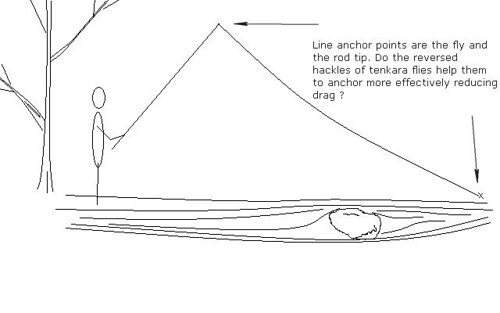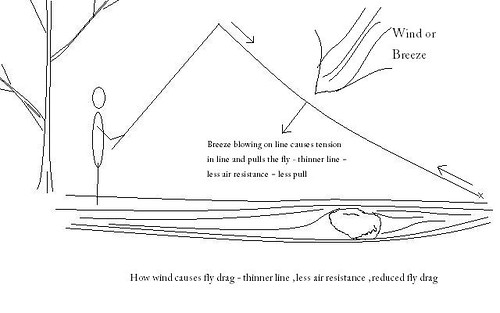
Although not the only method employed when fishing Tenkara, the ability to hold line off the water avoiding drag caused by currents is one of its key advantages. This is also one of the keys to the French nymph or long nymph method of fly fishing. There are many factors that affect this technique; I’ve done a few drawings that hopefully demonstrate some of them. I’m going to refer to Western fly fishing, or fly fishing as we normally do it with ringed fly rod, reel and fly line as ‘traditional fly fishing’ through the rest of this article.
We need some line weight to allow us to cast the fly, just as in traditional fly fishing. High density fluorocarbon allows us to have the desired weight in a thinner diameter line with less wind drag. Some people have been experimenting with very thin titanium wire for windy conditions. The weight of the fly makes a bigger difference than in traditional fly fishing. I feel a #3 Tenkara line approximates to #2 or #3 in traditional fly but steps up seem to make a bigger difference so a #4 Tenkara level line approximates to about #5 weight in traditional fly. The step from #3 level line to #3.5 is very noticeable, probably like going up a whole line weight in traditional fly fishing.

Generally a longer rod is needed because we want to suspend a longer length of line and to give us longer reach now we can’t pay out extra line. The length of rod is mostly determined by where you intend to fish, how much overhanging vegetation there is, how wide the water is etc. For the same fishing distance a longer rod allow for a higher rod tip and less tension in the line and therefore less lateral pull on the fly.

The fly anchors one end of the line to an extent, a small tungsten bead can help to anchor the fly, do traditional reversed Tenkara hackles do the same?






Might have some significance but only if
a) a fairly springy hackle
b) dressed full
b) is being held in the current or pulled in.
On second thoughts, it is impossible to ‘anchor’ the fly so as to prevent movement because:
‘anchoring’ means resisting the pull of the line
there is nothing but water to form the anchor
there is no resistance unless the fly is moving through the water
therefore it must move unless there is NO pull on the line
which can only happen if the line is drifting freely on the water.